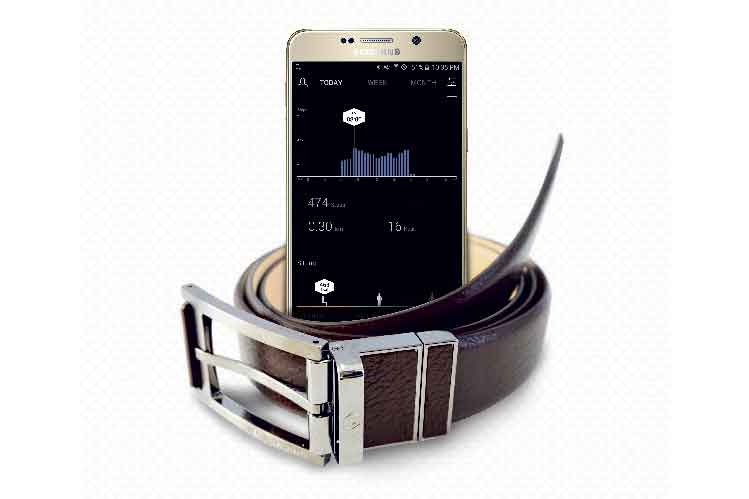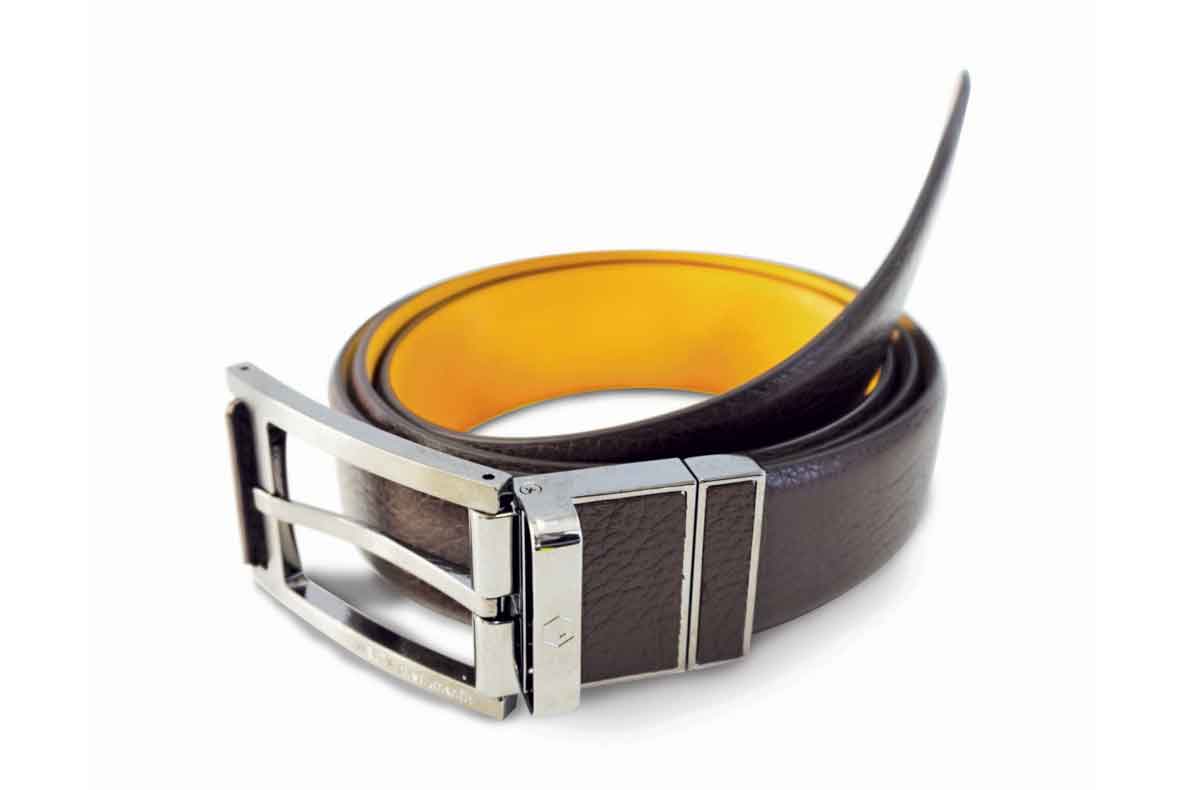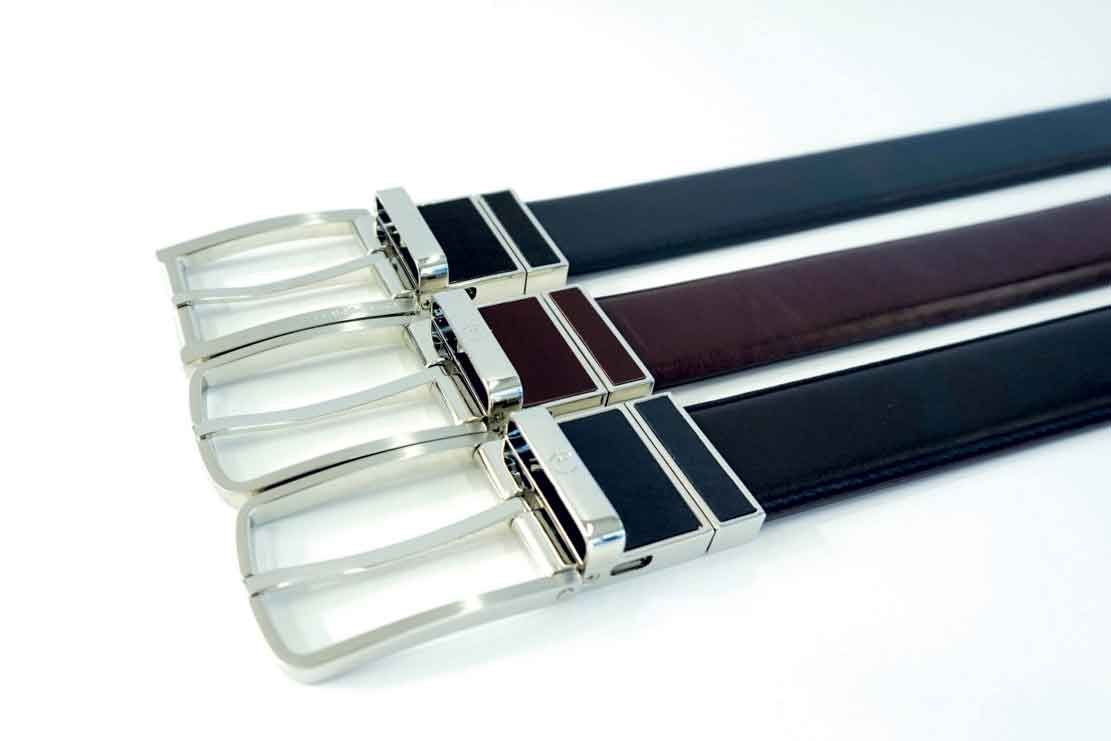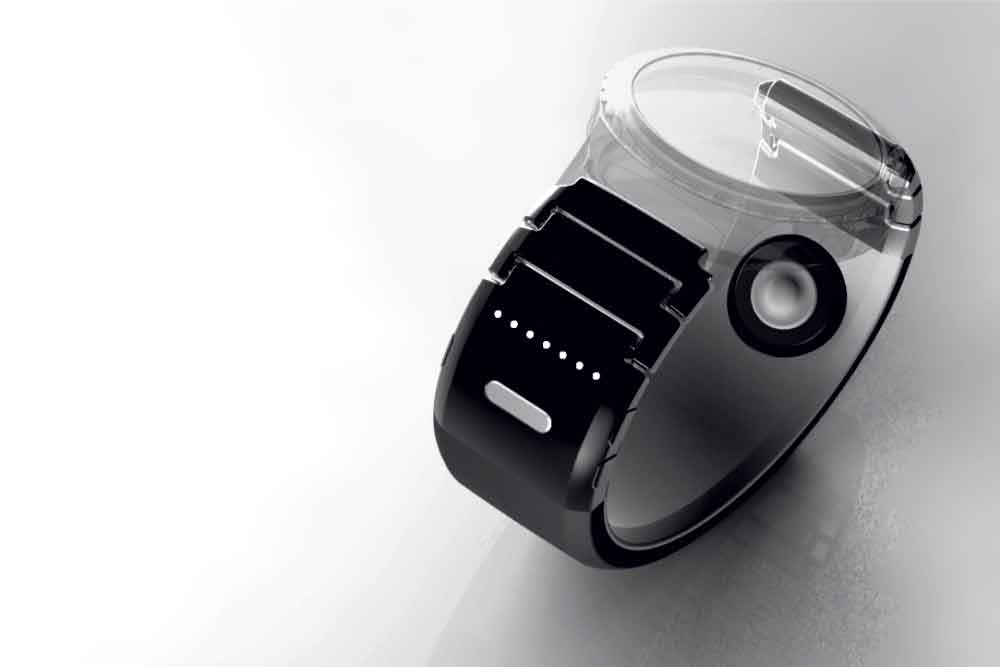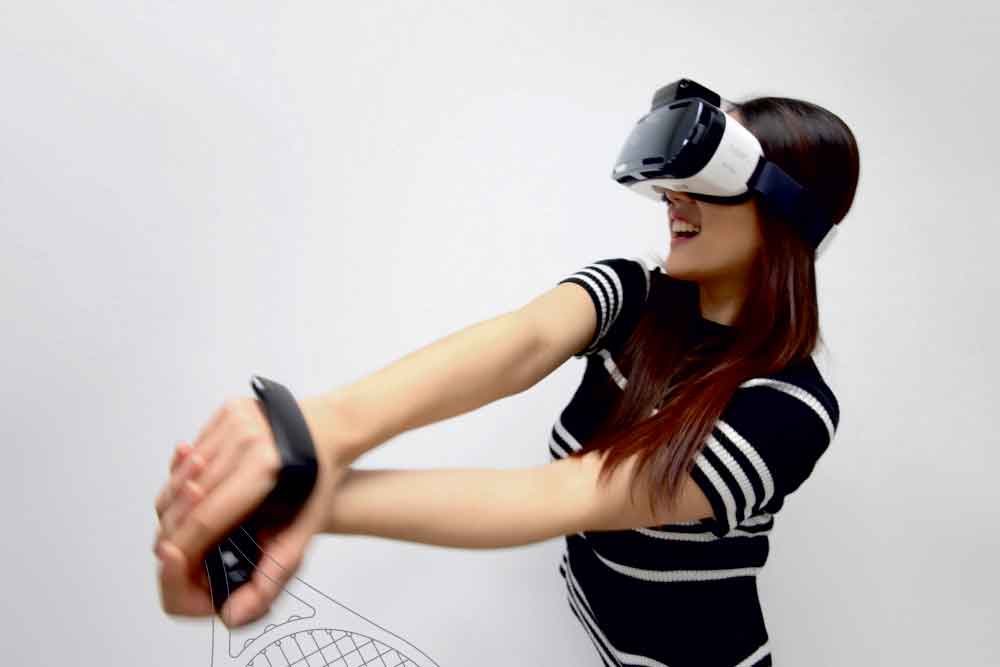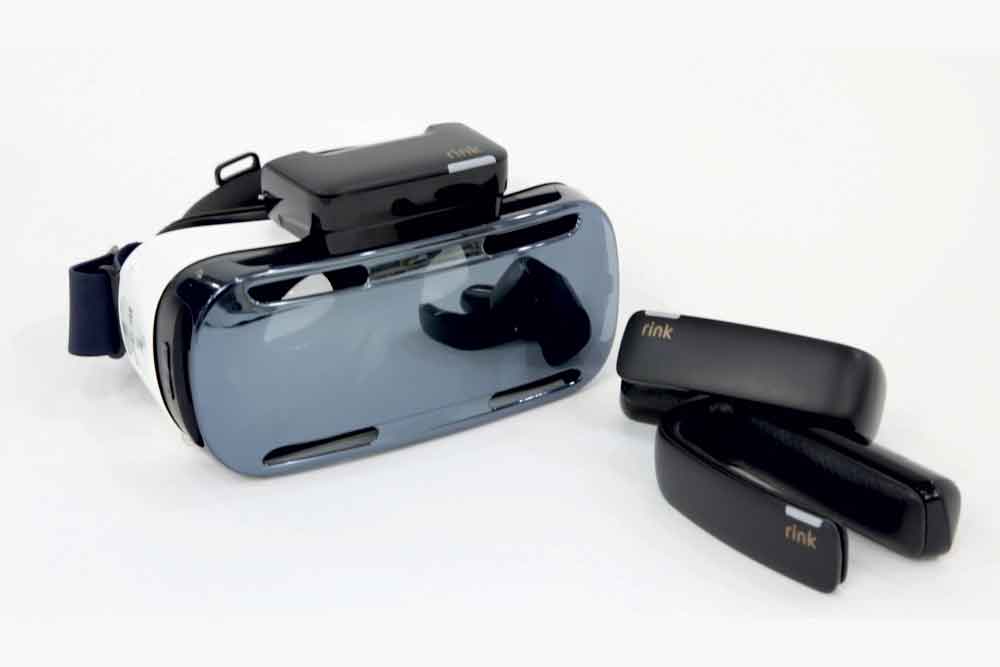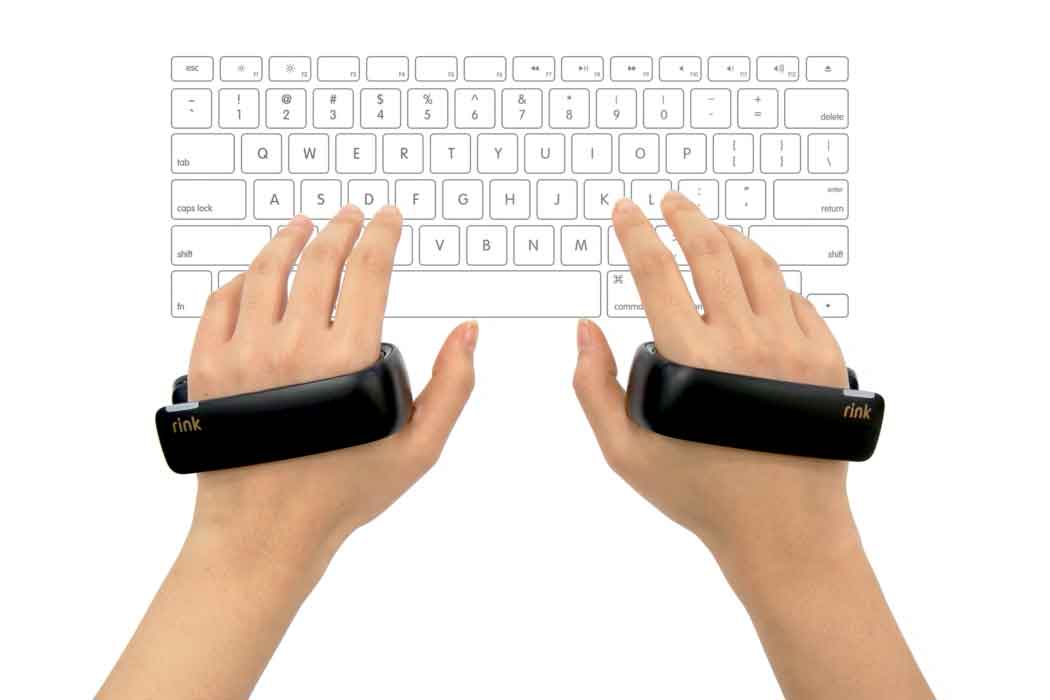C-Lab is a laboratory deep inside Samsung’s headquarters, where employees with great product ideas are encouraged to develop them. If the concepts are considered good enough, Samsung will let those behind the projects take time off from their regular jobs so they can make them reality. At CES 2016, the company brought three of the most exciting projects along to show what’s being worked on. We go the chance to try them all out.
Welt healthcare belt
Feeling bloated? Wondering if it’s because you ate too much, or if it’s an ongoing stomach or digestive issue? The Welt may be able to tell you, while also tracking your step count and keeping watch on your expanding (or disappearing) waistline. That’s because Welt is a smart belt, with all the technology stored inside the buckle.
The center of the body makes perfect sense for a step counter, as it can’t be fooled by vigorous arm exercises, and the waist is an excellent indicator of whether you’re gaining weight or not. Connecting to a smartphone app, the Welt provides an exact waist measurement, and an algorithm based on the way the stomach is expanding cleverly knows whether a change is due to overeating, weight gain, or bloating.
It even tracks this in real-time, and displays the results on an ECG-style graph. One of Welt’s engineers showed this off by deliberately pushing out his stomach, and the previously flat line spiked instantly. The app was a very early build and light on information, but the final version will provide more data from more measurements.
It’s being developed with Samsung Fashion, but there’s no final release date yet, and the price will vary depending on the quality of material used for the belt itself. The intention will be to co-brand the Welt, and offer it to fashion partners at all levels. The best thing is, outside of a Micro USB port to recharge the battery every week or so, it looks exactly like a regular belt.
Samsung TipTalk
Probably the most unusual of the three, TipTalk is a smart replacement wristband for regular watches. Rather than add notifications — although it can do that as well — or fitness tracking, it turns your finger into a speaker so you can still have private conversations without using your phone.
Yes, you heard right, your finger becomes a speaker. The wrist band uses a special vibrating disk that presses against your skin to transfer sounds through your hand, so that when you touch your finger against your ear, you can hear the sounds transmitted. It’s a very odd experience, not unlike a bone-conducting system like Google Glass, but far more uncanny, because the sound is coming from your body.
In possibly the worst environment — a busy trade show floor — and using a band not adjusted for our wrist — therefore not giving the best connection, we tried it out. The audio was a little muffled, but still understandable. The wristband has a microphone, so it’s entirely possible to have a two-way conversation. Far more preferable than yelling at your watch, where all can hear what’s being said. The band comes in a few different colors, metal versions will come in the future, the battery is recharged using a Micro USB cable, and there are four different sizes to suit many watch lugs.
TipTalk started life in Samsung’s C-Lab, and is now a full-fledged prototype, with the team working on it full time. The next step will be a crowdfunding campaign in a few months time, with an expected launch before the end of the year. The price will be in the region of $70 to $80. Not everyone will have a use for the TipTalk, but it’s a fun project that, if nothing else, will be quite the talking point when used out in public.
Rink
TipTalk is the only confirmed greenlit C-Lab project we saw, but Rink was the one we hope will follow it. Built for mobile-based virtual reality headsets like Gear VR, Rink gives the wearer two wireless hand controllers for use in the VR world. It’s clever too. A small unit has to be placed on the headset, which projects a magnetic field to track the location of the controllers. These are U-shaped grips that fit over your palm, and actually house an infrared sensor array that understands whether your fists are clenched, and the location of your fingers.
To demonstrate Rink, I was given the chance to be Iron Man, or at least, pretend to have his awesome repulser weapon. With Gear VR on, I was suddenly attacked by drones, and able to shoot back using those palm-based weapons. Waving my hands around in mid-air made targets appear on the Gear VR’s screen, then pening my clenched fists unleashed a barrage of fire, requiring me to track the target drone as it tried to evade my attack. Closing my fist reloaded the weapon.
Like many VR experiences, it was smile-inducing fun, and added another dimension to the already excellent Gear VR. At the moment, Gear VR’s only control option outside of its own touchpad is a Bluetooth gamepad. Rink makes it more immersive, and closer to the experience offered by more expensive VR units. Other possible uses aside from gaming include typing on a virtual touchscreen, made possible by the combination of magnetic and infrared hand tracking.
Rink’s only a prototype at the moment, and was brought to CES so tech fans could share an opinion of the system. If you’re listening Samsung, it’s brilliant, and we’d like one of our own right now. Sadly, there’s no plan to put it into production anytime soon.

